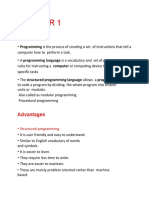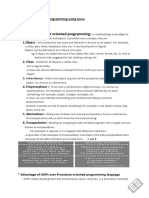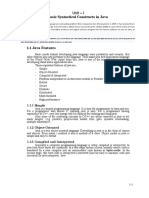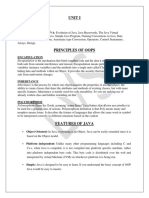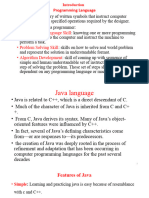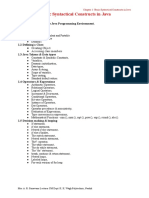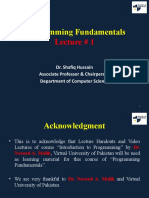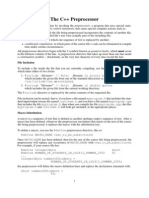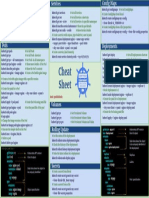0% found this document useful (0 votes)
11 views44 pagesJava U1
The document outlines the syllabus for a Java programming course, covering topics such as program structure, data types, control statements, and object-oriented programming principles. It highlights Java's features, including its security, platform independence, and robustness, along with practical examples of writing simple Java programs. Additionally, it discusses various elements of Java programming, including keywords, identifiers, literals, operators, comments, and command line arguments.
Uploaded by
jalamanirojeCopyright
© © All Rights Reserved
We take content rights seriously. If you suspect this is your content, claim it here.
Available Formats
Download as PDF, TXT or read online on Scribd
0% found this document useful (0 votes)
11 views44 pagesJava U1
The document outlines the syllabus for a Java programming course, covering topics such as program structure, data types, control statements, and object-oriented programming principles. It highlights Java's features, including its security, platform independence, and robustness, along with practical examples of writing simple Java programs. Additionally, it discusses various elements of Java programming, including keywords, identifiers, literals, operators, comments, and command line arguments.
Uploaded by
jalamanirojeCopyright
© © All Rights Reserved
We take content rights seriously. If you suspect this is your content, claim it here.
Available Formats
Download as PDF, TXT or read online on Scribd
/ 44










